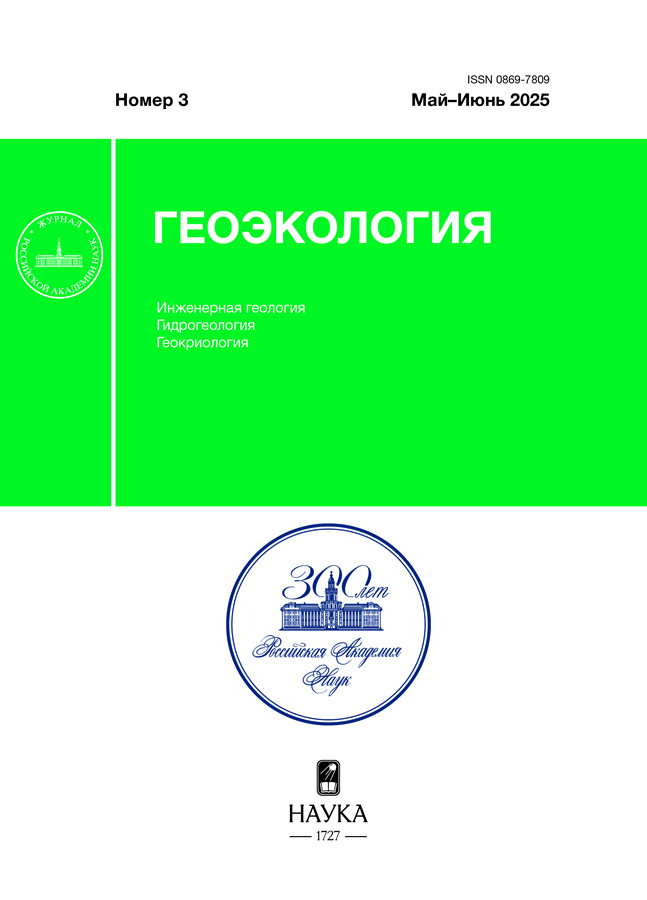ПРИРОДНЫЕ ПРОЦЕССЫ КАК ФАКТОРЫ ОБОСНОВАНИЯ РЕШЕНИЙ ПО ПОРТОВЫМ ГИДРОТЕХНИЧЕСКИМ СООРУЖЕНИЯМ
- Авторы: Кантаржи И.Г.1, Куприн А.В.1
-
Учреждения:
- Национальный исследовательский Московский государственный строительный университет
- Выпуск: № 1 (2023)
- Страницы: 34-40
- Раздел: ФУНКЦИОНИРОВАНИЕ ПРИРОДНЫХ И ПРИРОДНО-ТЕХНИЧЕСКИХ СИСТЕМ
- URL: https://journals.rcsi.science/0869-7809/article/view/139098
- DOI: https://doi.org/10.31857/S0869780923010046
- EDN: https://elibrary.ru/HSMQLA
- ID: 139098
Цитировать
Полный текст
Аннотация
По опубликованным данным из открытых источников проанализировано влияние морских волн и течений на портовые гидротехнические сооружения, рассмотрены характеристики размывов от волн, в том числе от волн цунами. Исследованы механизмы размыва от морских волн, связь между местным размывом и разжижением грунта. Исследовано их влияние на устойчивость морских гидротехнических сооружений. Проанализированы механизмы потери устойчивости гидротехническими сооружениями вследствие размыва волнами цунами. Приведен параметр усиления размыва от волн цунами, который представляет собой долю, на которую градиент порового давления уменьшает силы трения, сопротивляющиеся размыву. Такой подход позволяет учитывать явление разжижения грунта при оценке размывов, вызываемых волнами цунами.
Об авторах
И. Г. Кантаржи
Национальный исследовательский Московский государственный строительный университет
Автор, ответственный за переписку.
Email: kantardgi@yandex.ru
Россия, 129337, Москва, Ярославское шоссе, 26
А. В. Куприн
Национальный исследовательский Московский государственный строительный университет
Автор, ответственный за переписку.
Email: rtyter55@gmail.com
Россия, 129337, Москва, Ярославское шоссе, 26
Список литературы
- Куприн А.В., Кантаржи И.Г. Влияние разжижения грунта на глубину размыва, вызываемого волнами цунами // Гидротехническое строительство. 2022. № 5. С. 8–12.
- Куприн А.В., Кантаржи И.Г. Типы размывов от волн цунами, воздействующих на гидротехнические сооружения // Гидротехника, 2020. № 4 (61). С. 48–50.
- Iida T., Kure S., Udo K., Mano A., Tanaka H. Scouring mechanism around structure by return flow of tsunami considering liquefaction // Journal of Japan Society of Civil Engineers, Series B2 (Coastal Engineering). 2015. V. 71 (2). P. 241–246. https://doi.org/10.2208/kaigan.71.I_241
- Kato F., Suwa Y., Watanabe K., Hatogai S. Mechanisms of coastal dike failure induced by the reat East Japan Earthquake tsunami // Proc. 33rd Int. Conf. Coastal Engineering, 2012 Santander, Spain. https://doi.org/10.9753/icce.v33.structures.40
- Kuprin A.V., Novakov A.D., Kantarzhi I.G., Gubina N.A. Local and General Scours Caused by Tsunami Waves // Power Technology and Engineering. 2021. V. 54. No 6. P. 836–840. https://doi.org/10.1007/s10749-021-01296-1
- Kuswandi K. Triatmadja R., Istiarto I. Simulation of scouring around a vertical cylinder due to tsunami // Science of Tsunami Hazards. 2017. V. 36 (2). P. 59–69.
- Lim G., Premaratne B., Jayaratne R., Marriott M., Shibayama T. Comparison of Failure Mechanisms of Coastal Structures due to the 2004 Indian Ocean and 2011 Tohoku Tsunami Events // Proc. 6th Int. Conf. on Structural Engineering and Construction Management, 2015.
- Tonkin S., Francis M., Bricker J. Limits on Coastal Scour Depths due to Tsunami // Proc. 6th China-Japan-US Trilateral Symposium on Lifeline Earthquake Engineering. 2013. P. 671–678. https://doi.org/10.1061/9780784413234.086
- Tonkin S., Yeh H., Kato F., Sato S. Tsunami scour around a cylinder: an effective stress approach // Journal of Fluid Mechanics. 2003. V. 496. P. 165–192. https://doi.org/10.1017/S0022112003006402
- Van Der Tempel J., Zaaijer M.B., Subroto H. The effects of scour on the design of offshore wind turbines // Proc. 3rd Int. Conf. on Marine Renewable Energy. 2004. London UK. P. 27–35.
- Yang G., Jianhong Y. Nonlinear standing wave-induced liquefaction in loosely deposited seabed // Bulletin of Engineering Geology and the Environment. 2017. V. 77. P. 1–19. https://doi.org/10.1007/s10064-017-1038-z
- Yeh H. Tsunami Inundation Scour of Roadways, Bridges and Foundations Observations and Technical Guidance from the Great Sumatra Andaman Tsunami // Professional Fellowship Report. 2006.
- Yeh H., Li W. Tsunami Scour and Sedimentation // Proc. 4th Int. Conf. on Scour and Erosion. 2008, Tokyo, JP, P. 95–106.
Дополнительные файлы












